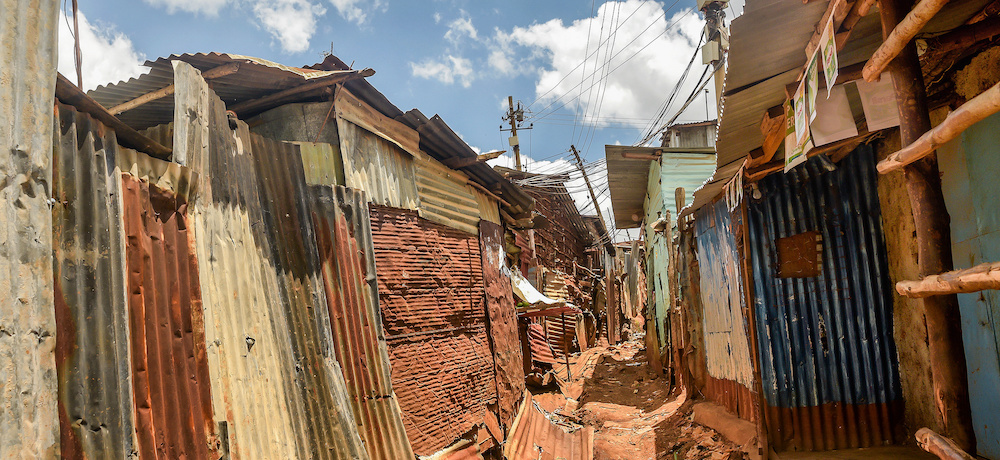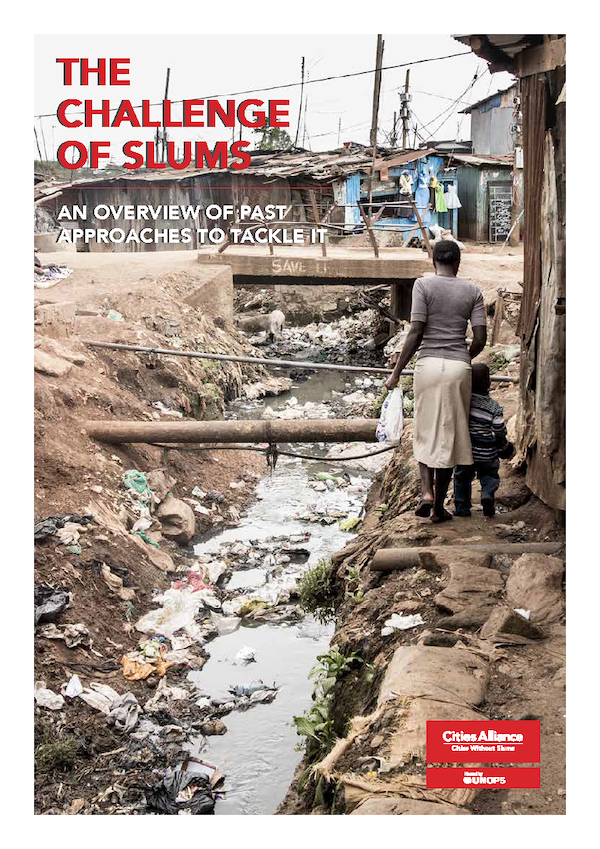- Who We Are
- How We Work
- Portfolio & Results
- Newsroom
- Resources
The Challenge of Slums—An Overview of Past Approaches to Tackle It


Slums are not a temporary phenomenon but a structural feature of urbanization. Despite global alliances and considerable advancements in improving the lives of slum dwellers (resulting in a relative decline since the implementation of MSDG Target 7D), the total slum population grew from 723 million in 1990 to 817 million in 2000 to 928 in 2014. The full impact of COVID-19 on slum formation still has to be assessed but will certainly increase the recent push, as already between 2014 and 2018, both the absolute (from 928 to 1.034 million) and relative slum numbers increased, from 23 per cent to 24 per cent.
More than ever, there is a need for well-informed, effective, and impactful interventions in improving the lives of slum dwellers around the world. Unfortunately, our knowledge of slums and informality and interventions to tackle them falls short of the depth and breadth of the challenge. The Global Review Series on Informality is a step towards synthesizing experiences around the world to highlight what works and which remaining challenges need to be tackled.
This paper review is a background paper for the review series. It defines important terms, such as the difference between slums, informal, and inadequate housing and provides a brief historic overview of past efforts to address slums and informal urbanization, including neglect, evictions, public housing programmes, sites and services, and slum upgrading programmes. Past attempts have struggled to adequately address the challenge and diversity of slums both in terms of scale as well as depth. Nevertheless, a broader learning curve can be observed from an international vantage point.
Main Messages
- There is a need for a differentiated understanding of slums: Slums are complex realities and differ greatly around the world. The realities of slums, informal settlements, and inadequate housing also vary, as do slums amongst countries, within nations, and in cities.
- There is a need to learn from history. Governments have tried different approaches to address the challenge of slums and informal urbanization, ranging from benign neglect, clearance, relocation sites and services, and the first generation of slum upgrading programmes. Past attempts have struggled to adequately address the challenge and diversity of slums both in terms of scale as well as depth. Nevertheless, a broader learning curve can be observed from an international vantage point.
- Slums and informal urbanization are not a temporary phenomena but a structural feature of urbanization. Past approaches and their often limited impact, along with negative externalities, have underlined the need for comprehensive and strategic approaches. There is a need for more structural approaches and policy reforms to address the underlying causes of slums, such as poverty, inequality, and other forms of persisting exclusion. A separate paper has been dedicated to this issue.


